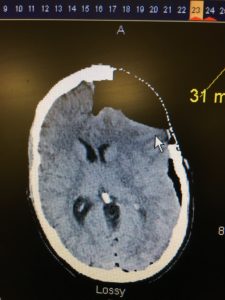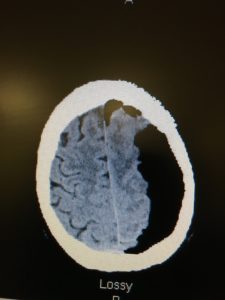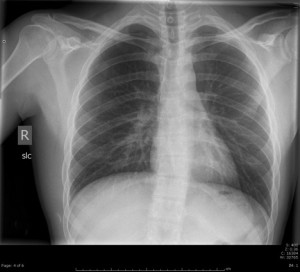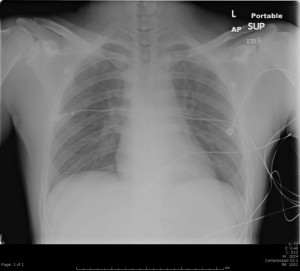Earlier this month while moonlighting I had an approximately 40yM present for a headache (9/10 pain) for 3 days.
I know, this is an everyday occurrence.
But in his case he had a craniotomy with removal of a meningioma 1 month prior. He also noted 2 weeks of swelling on the left side of his head along the surgical scar.
ROS: denied fevers, chills, changes in vision, weakness, numbness, or tingling, etc.
PE: VSS, HEENT: Left side of head extending from his surgical scar and wrapping around to even under his L eyebrow was swollen and firm. NEURO: WNL
So, I know something isn’t right and my guess is that he either had a bleed or infection associated with his surgery. I order a CT head. For his headache I give him a migraine cocktail (IVF, compazine, and benadryl, minus the toradol).


After I see the CT images, I rush to check on the patient as the CT obviously shows quite a bit of midline shift and the patient states his headache is drastically improved (2/10 down from 9/10). Apparently migraine cocktails work on all causes of headache.
I consulted Neurosurgery who promptly admitted the patient to the ICU with plans to go to the OR. Approximately 45 minutes later, after the NES nurse practioner has seen the patient and he is getting packed up to go to the ICU, the radiologist calls to notify me of the CT findings.
This is a reminder to ALWAYS look at CT images yourself, especially if you’re expecting a life threatening finding.
![Room9er ["Room Niner"]:](https://room9er.com/wp-content/uploads/2020/03/cropped-Screen-Shot-2020-03-08-at-3.16.16-PM.png)


